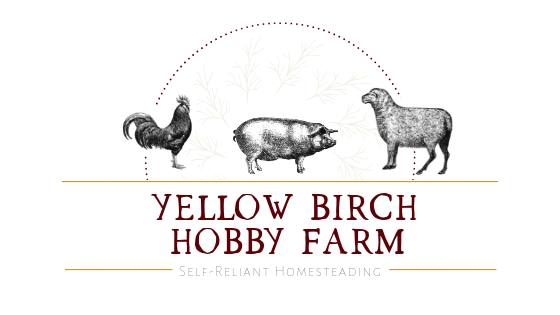Raising meat rabbits is a really easy way to provide healthy food for your family.
And developing a breeding program that fits your family’s needs will enable you to do so on a consistent basis that takes the stress out of both over (and under) production.
Today I’d like to show you my very simple breeding schedule that anybody can follow.

-
Day 1: Breeding day.
-
Day 30-32: Kindle day (aka babies being born day).
-
Week 7 (following kindling): Wean babies from mother and breed the next doe (or breed the same doe if you wish).
-
Week 12: Butcher day (the second litter will be 4 weeks old at this point)
-
Repeat the process (wean at 7 weeks/breed the next doe, butcher at 12 weeks).
This program is set up so that you are processing for the freezer every 2 months (with the exception of your very first breeding, which is 4 months from breeding to butchering). It is also designed so that if you need a larger cage/area for your grow outs, by the time you are weaning, the other group is ready for processing, thus freeing up that space if needed.
You can adjust based on your needs and even on litter sizes. Most of my does kindle an average of 8 kits per litter. So this program provides what we need for two months. Keep in mind how much your family actually consumes. Do you eat rabbit several times a week? We raise pigs, turkeys, chickens, and ducks in addition to hunting wild game like deer, bear, and grouse- so we only eat rabbit about once per week. If you eat rabbit twice per week or more, breed 2 does rather than 1 and follow the schedule just the same.

This program really took the stress out of the whole process for us. Last year, I was breeding 2-3 does at a time, which meant feeding a lot of grow outs, and butchering never got done in one day. It was just too much.
I also learned that we needed to adjust our rabbit program so that it didn’t interfere with other events, such as when it was time to process turkeys or pigs, or when it’s peak harvest time for the garden. And this setup allows you to plan ahead and alter the program as needed.

In addition, depending on where you live, there are certain times of the year that are more friendly toward rabbit production. Rabbits do not do well in extreme heat, for example. If you live somewhere that has especially hot summers, you may want to plan out your breeding schedule so that it avoids the hottest months of the year. We happen to live where it gets extremely cold in the winter. And while rabbits actually do better in the cold than they do the heat, we try to avoid kindling in January and February as these tend to be the coldest months for us.
But no matter your needs, climate, or personal situation, having a steady and reliable breeding program is beneficial to any responsible homesteader. Raising your own food means being conscientious and respectful of how much you consume. Being organized just plain old helps you maintain.
So get with the program.
The easy rabbit breeding program, that is.











easy as pie! mmmm rabbit pot pie 😀 thank you for a quick and concise post
You’re very welcome! 🙂
Hello Erin, how many people are in your family? I’m all alone so if I know your number I could use your plan. Thank you.
Hi, Ellen! We’re a family of 5. We eat about 1 whole rabbit per week (approx. 3 lbs or so). I hope this helps!
Ver straightforward! Thank you for posting.
You’re welcome! Thanks so much for reading 🙂
This sounds like a very workable schedule. We chose not to kindle in Jan/Feb due to cold and July/August due to heat.
Definitely workable! I also avoid July/August, depending on the summer. And because processing for the pigs and sheep takes place October/November…don’t need any more projects during that time! 🙂
Thanks so much for visiting!